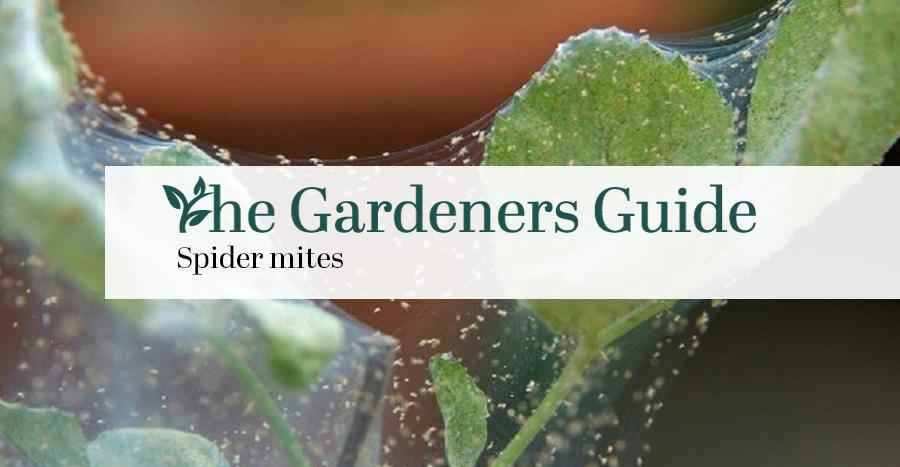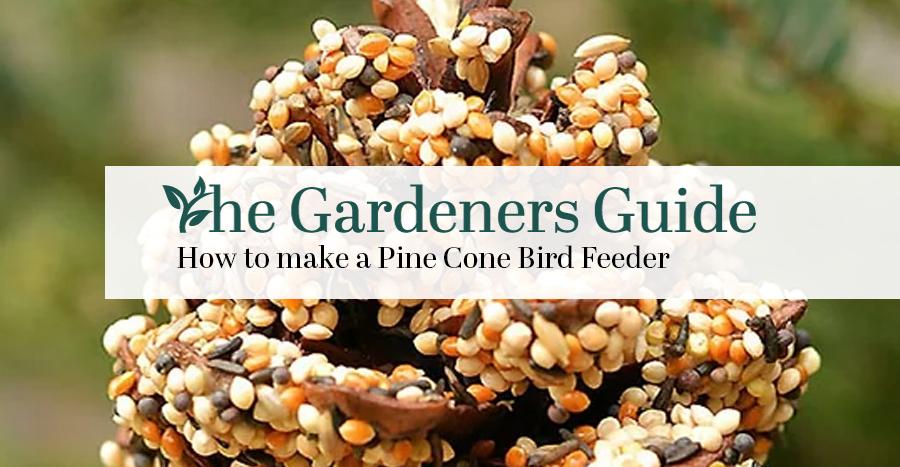Spider Mites: The Bane Of My Existence
Spider mites are a common pest that can wreak havoc in gardens and indoor plants. These tiny arachnids may be small, but their destructive ability is formidable. Successfully combating spider mites requires understanding their biology, behavior, and the potential damage they can cause.
One fascinating aspect of spider mites is their rapid reproduction rate. These pests are known for their ability to swiftly multiply and infest plants in large numbers. Female spider mites can lay hundreds of eggs during their short lifespan, leading to exponential population growth if left unchecked.
Another intriguing characteristic of spider mites is their web-spinning behavior. Unlike spiders that build intricate webs to catch prey, spider mites create fine silk-like threads as a form of protection and transportation. These delicate strands help them move between leaves or attach themselves securely to plant surfaces, allowing them to establish colonies and expand their territory easily.
Controlling spider mite infestations requires diligence and proactive measures. As these pests are incredibly small and difficult to detect with the naked eye, regular monitoring of plants is crucial. Implementing integrated pest management strategies such as natural predators or organic insecticides can help keep spider mite populations under control without harming beneficial insects or animal life in the surrounding ecosystem.
Identification: How to spot spider mites.
Spider mites may be tiny, but their impact on plants can be devastating. These minuscule arachnids thrive in warm and dry conditions, making them common pests in greenhouses and indoor gardens. The first step in effectively combating these pests is identifying their presence. One telltale sign of a spider mite infestation is the appearance of small yellow or white dots on the leaves of plants. Upon closer inspection, you will notice fine webbing between the affected foliage or flowers—a classic hallmark of spider mite activity.
Another way to identify spider mites is by observing the discoloration and stippling on plant leaves. As they feed on chlorophyll-rich cells, they leave behind a speckled appearance that ranges from light yellow to brown spots. This damage can significantly stunt plant growth and reduce overall vigor if left unchecked. Additionally, with severe infestations, you may even see distorted leaves or silver-colored webs covering large portions of your plants—clear indicators that action must be taken promptly.
Identifying spider mites early is crucial for effective control, preventing potential widespread damage and loss of your plants. Regularly inspecting your garden or greenhouse for any signs mentioned above is essential in catching these tiny invaders before they become a full-blown infestation. Remember to explore different angles when scrutinizing your plants – sometimes signs are more evident when viewed from below the leaf surface!
Life Cycle:
Spider mites might be tiny creatures, but their life cycle is fascinating and worth delving into. Understanding how they reproduce and develop can help us prevent infestations and keep them at bay. These arachnids go through a simple life cycle consisting of four stages: egg, larva, nymph, and adult. It only takes a few days for spider mite eggs to hatch, starting the cycle all over again.
To avoid inadvertently creating a favorable environment for spider mites, it’s helpful to understand their preferred conditions. These pests thrive in warm temperatures (around 70-80 degrees Fahrenheit) with low humidity levels (below 50%). They also prefer plants under stress due to factors like inadequate watering or poor nutrition. Regularly inspecting your plants for signs of stress or potential infestation can help you address issues before they become full-blown problems.
Preventing a habitat conducive to spider mites involves taking proactive measures such as keeping your plants properly watered, providing adequate sunlight, and promoting good plant health through proper fertilization. Additionally, maintaining appropriate humidity levels and regularly cleaning or pruning affected areas can dissuade these pesky critters from calling your garden home. By understanding their life cycle and preferred conditions, we can greatly reduce the chances of encountering a spider mite infestation in our green spaces.
Dormancy: Beware of the deceptive nature of spider mite.
Dormancy is a clever survival strategy employed by many organisms, including spider mites. These tiny arachnids can enter a state of dormancy when conditions become unfavorable, such as during the winter months or when their food sources are scarce. While they may appear to vanish from sight during this time, make no mistake – they are still very much alive. The deceptive nature of dormancy can lead gardeners and plant enthusiasts to believe that their spider mite infestation has been successfully eradicated, only to be blindsided when the pests resurface with a vengeance.
One reason why dormancy can be so misleading is that spider mites are masters of hiding in plain sight. When dormant, these minuscule creatures will often seek refuge in the cracks and crevices of plants or even bury themselves deep within the soil. Their ability to camouflage themselves and remain undetectable for extended periods allows them to bide their time until conditions improve. This sneaky behavior not only makes it difficult for gardeners to spot them but also gives the illusion that they have disappeared completely.
Moreover, it’s important to recognize that while dormant, spider mites’ metabolic activity slows down significantly. This means that they require fewer resources like water and nutrients to survive during this period. Consequently, any attempts at using chemical treatments against dormant populations may prove futile since these formulations rely on targeting active pests. Understanding how dormancy works is crucial for effective pest management strategies because it reveals why consistency and vigilance are key

Damage: The impact of spider mite infestations.
Spider mite infestations can wreak havoc on plants, leading to significant damage and potential crop loss. These tiny arachnids often go unnoticed until their population explodes, leaving behind a trail of destruction. One of the most noticeable signs of a spider mite infestation is the appearance of small, discolored spots on leaves. As these pests feed on plant sap, they weaken the foliage and cause it to turn yellow or brown. If left uncontrolled, spider mites can completely defoliate plants, depriving them of their ability to photosynthesize and ultimately killing them.
The impact of spider mite infestations reaches beyond cosmetic damage alone. These pests also have the potential to transmit diseases from plant to plant as they move around in search of new feeding sites. This not only affects individual plants but also poses a threat to entire crops or gardens. Additionally, an infestation can attract other pest species that may prey upon weakened plants or contribute further damage themselves.
While some pesticides may provide temporary relief from spider mites, it’s important to take a holistic approach when combating these pests. This includes cultural practices such as regular monitoring and cleaning up garden debris that could harbor overwintering eggs or adults. Introducing natural predators like ladybugs or predatory mites into your garden can also help keep spider mite populations in check without relying solely on chemical interventions.
Understanding the true impact of spider mite infestations highlights the need for proactive management strategies that go beyond quick fixes.
Prevention: Steps to prevent spider mite outbreaks.
Prevention is key when it comes to dealing with spider mite outbreaks. These tiny arachnids can wreak havoc on your plants, leaving them vulnerable to damage and disease. To keep your garden or indoor plants free from spider mites, follow these simple steps:
1. Regularly inspect your plants: Spider mites multiply rapidly, so keeping a close eye on your plants is crucial in catching an infestation early on. Look for signs such as yellowing leaves, webbing, or small specks on the leaves.
2. Keep plants dry: Spider mites thrive in humid conditions, so avoid excess watering and ensure proper drainage. Overwatering can create a suitable environment for their rapid reproduction.
3. Increase airflow: Good ventilation helps maintain optimal conditions for plant growth while discouraging spider mite colonies from forming. Place fans near your plants or consider using oscillating fans to improve air circulation.
4. Apply beneficial insects: Encourage natural predators like ladybugs and lacewings that feed on spider mites by releasing them into your garden or indoor area.
5. Use organic repellents: Homemade sprays made from ingredients like neem oil, garlic, or peppermint can repel spider mites while keeping harmful chemicals away from your precious plants.
Control: Effective methods for managing spider mites.
- Regularly inspect plants for early signs of spider mite infestation, such as tiny yellow or white specks on the leaves, as catching them early is crucial for effective control.
- Use a strong blast of water to knock off spider mites from plant surfaces. This simple and inexpensive method can be surprisingly effective, especially when done regularly as a preventative measure.
- Introduce natural predators like ladybugs, lacewings, and predatory mites into your garden. These beneficial insects feed on spider mites and help keep their populations in check. You can purchase them online or at garden centers.
- Encourage biodiversity in your garden by growing a wide variety of plants. Monoculture makes it easier for spider mite populations to explode because they often prefer specific species. By planting diverse plants, you’ll create an environment that’s less favorable for spider mites to thrive.
- Implement cultural practices such as regular pruning to remove heavily infested parts of the plant and improve air circulation around the foliage. Additionally, avoid over-fertilizing with nitrogen-rich fertilizers, as this can stimulate excessive leaf growth that attracts spider mites.
- Consider using homemade remedies like neem oil or insecticidal soap spray if natural controls alone aren’t sufficient. However, use these solutions sparingly and follow the manufacturer’s instructions carefully to minimize harm to beneficial insects and other wildlife.
Natural remedies: Chemical-free options for eliminating spider mites.
- Neem oil: Neem oil is a popular natural remedy for spider mites as it works as both an insecticide and a fungicide. Dilute neem oil with water according to the instructions on the packaging, and spray it onto the affected plants. The powerful compounds in neem oil disrupt the life cycle of spider mites, preventing them from reproducing and causing further damage.
- Homemade garlic spray: Garlic has natural sulfur compounds that can kill or repel spider mites. To make a homemade garlic spray, blend several cloves of garlic with water until smooth. Strain the mixture into a spray bottle and spritz it onto your plants, concentrating on areas where you see spider mite activity. The strong odor of garlic will deter these pests while also acting as an antifungal agent.
- Predatory insects: Introducing predatory insects such as ladybugs or lacewings into your garden can help control spider mite populations naturally. These beneficial insects feed on small pests like spider mites, helping to keep their numbers in check without the use of harmful chemicals. You can purchase these insects from specialized suppliers or create suitable habitats to attract them naturally, such as by planting flowering plants that attract pollinators.
Ready Made Products
Organic products:
- Neem oil: Derived from the neem tree, neem oil is a natural insecticide that disrupts the life cycle of spider mites and prevents their reproduction.
- Insecticidal soap: Made from potassium salts of fatty acids, insecticidal soap works by suffocating spider mites and other soft-bodied insects.
- Beneficial insects: Introducing predatory mites or ladybugs to your garden can help control spider mite populations naturally.
Synthetic products:
- Acaricides: These chemical insecticides specifically target and kill spider mites. However, it’s important to be cautious when using synthetic pesticides as they may harm beneficial insects or leave chemical residues on plants.
- Systemic insecticides: These substances are absorbed by the plant and circulate through its tissues, making them toxic to spider mites when ingested.
- Miticides: Specifically designed to combat spider mite infestations, miticides are effective in killing adult mites, as well as their eggs and nymphs.
When choosing between organic and synthetic options for controlling spider mites, it’s essential to consider factors such as effectiveness, safety for humans and pets, environmental impact, cost-effectiveness, and ease of use. Remember that each product has its advantages and limitations, so always read the labels carefully before applying any pesticide—be it organic or synthetic—in order to minimize risks associated with their usage.
Products Horticultural Expects Recommend
Below is a list of a few recommended products from horticultural experts that can help you combat the notorious spider mites.
Conclusion
Spider mites are tiny pests that can wreak havoc on your plants if left unchecked. They have the ability to reproduce rapidly and cause significant damage to plant foliage, leading to stunted growth and reduced crop yields. It is important for gardeners and farmers alike to be vigilant in monitoring their plant populations and take immediate action at the first sign of infestation.
One key takeaway from this discussion is the importance of proactive prevention rather than reactive treatment when it comes to spider mites. Regularly inspecting plants for signs of infestation, such as yellowing leaves or fine webbing, can help catch the problem early on. Implementing a combination of cultural practices, like good sanitation and proper watering techniques, along with natural predators or organic pesticides can help keep spider mite populations under control without resorting to chemical-heavy solutions.
Lastly, it’s worth noting that while spider mites may seem like a nuisance, they also serve as an indicator of imbalances in our ecosystems. Their presence could signal issues with soil health or pest management strategies. By developing holistic approaches that address these underlying problems rather than simply treating symptoms, we can not only combat spider mite infestations but also create healthier environments for our plants and beneficial insects to thrive.
To wrap up this exploration into the world of spider mites, it’s clear that understanding their biology and behavior is imperative in effectively managing them.
This article may contains some affiliate links. By making a purchase through the affiliate links in this article, you are supporting the author and granting them a small commission.
















Leave a Reply
Want to join the discussion?Feel free to contribute!